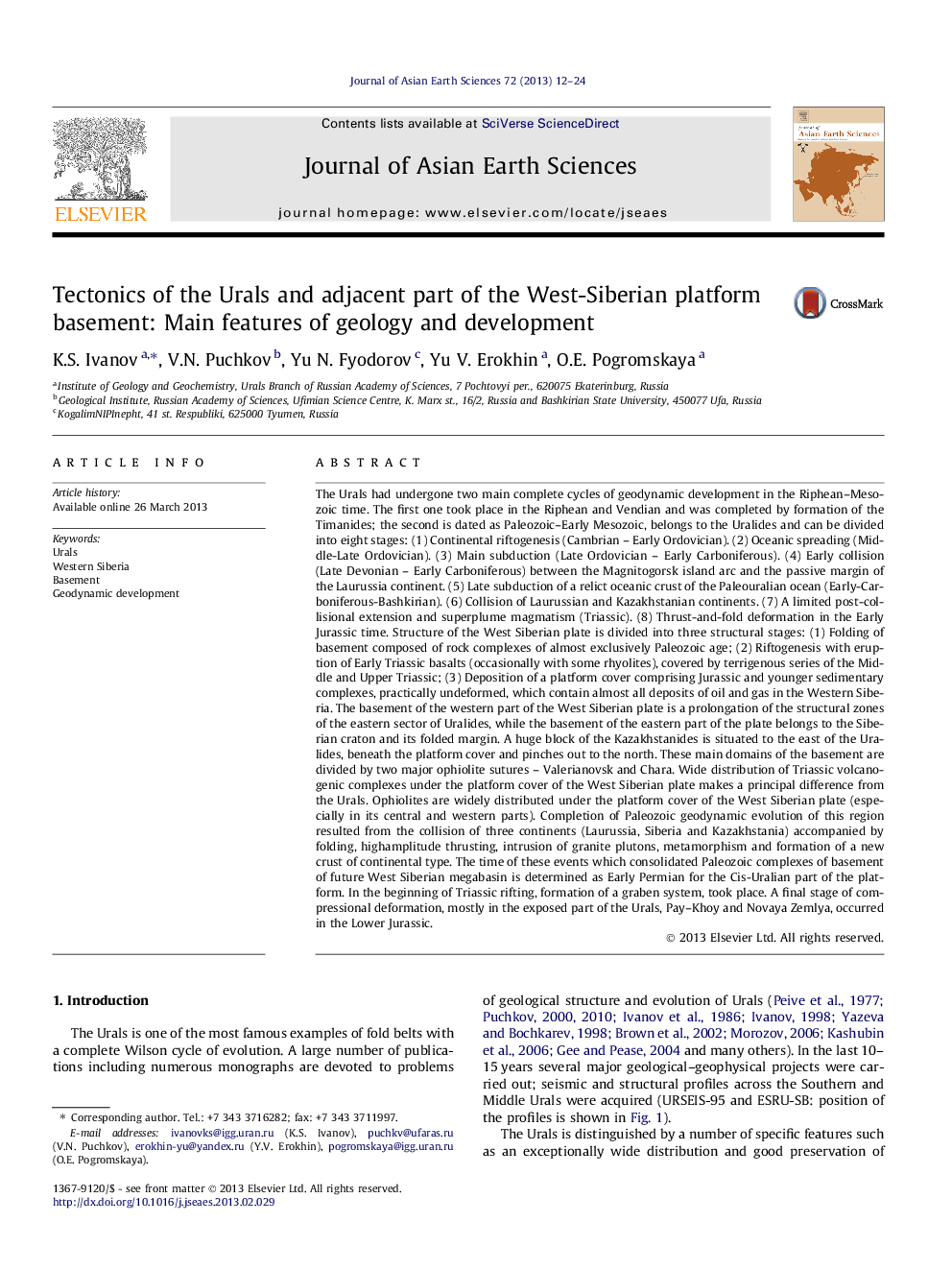| کد مقاله | کد نشریه | سال انتشار | مقاله انگلیسی | نسخه تمام متن |
|---|---|---|---|---|
| 4730963 | 1640395 | 2013 | 13 صفحه PDF | دانلود رایگان |
• Tectonics of the Urals and basement of West Siberia are compared.
• The basement of the western part of the West Siberian plate belongs to Uralides.
• The eastern part of the plate belongs to the Siberian craton and its folded frame.
• Kazakhstanides situated to the east of the Uralides; domains divided by ophiolite sutures.
• In Triassic rifting and uplift of intrusive and metamorphic complexes, took place.
The Urals had undergone two main complete cycles of geodynamic development in the Riphean–Mesozoic time. The first one took place in the Riphean and Vendian and was completed by formation of the Timanides; the second is dated as Paleozoic–Early Mesozoic, belongs to the Uralides and can be divided into eight stages: (1) Continental riftogenesis (Cambrian – Early Ordovician). (2) Oceanic spreading (Middle-Late Ordovician). (3) Main subduction (Late Ordovician – Early Carboniferous). (4) Early collision (Late Devonian – Early Carboniferous) between the Magnitogorsk island arc and the passive margin of the Laurussia continent. (5) Late subduction of a relict oceanic crust of the Paleouralian ocean (Early-Carboniferous-Bashkirian). (6) Collision of Laurussian and Kazakhstanian continents. (7) A limited post-collisional extension and superplume magmatism (Triassic). (8) Thrust-and-fold deformation in the Early Jurassic time. Structure of the West Siberian plate is divided into three structural stages: (1) Folding of basement composed of rock complexes of almost exclusively Paleozoic age; (2) Riftogenesis with eruption of Early Triassic basalts (occasionally with some rhyolites), covered by terrigenous series of the Middle and Upper Triassic; (3) Deposition of a platform cover comprising Jurassic and younger sedimentary complexes, practically undeformed, which contain almost all deposits of oil and gas in the Western Siberia. The basement of the western part of the West Siberian plate is a prolongation of the structural zones of the eastern sector of Uralides, while the basement of the eastern part of the plate belongs to the Siberian craton and its folded margin. A huge block of the Kazakhstanides is situated to the east of the Uralides, beneath the platform cover and pinches out to the north. These main domains of the basement are divided by two major ophiolite sutures – Valerianovsk and Chara. Wide distribution of Triassic volcanogenic complexes under the platform cover of the West Siberian plate makes a principal difference from the Urals. Ophiolites are widely distributed under the platform cover of the West Siberian plate (especially in its central and western parts). Completion of Paleozoic geodynamic evolution of this region resulted from the collision of three continents (Laurussia, Siberia and Kazakhstania) accompanied by folding, highamplitude thrusting, intrusion of granite plutons, metamorphism and formation of a new crust of continental type. The time of these events which consolidated Paleozoic complexes of basement of future West Siberian megabasin is determined as Early Permian for the Cis-Uralian part of the platform. In the beginning of Triassic rifting, formation of a graben system, took place. A final stage of compressional deformation, mostly in the exposed part of the Urals, Pay–Khoy and Novaya Zemlya, occurred in the Lower Jurassic.
Journal: Journal of Asian Earth Sciences - Volume 72, 10 August 2013, Pages 12–24
